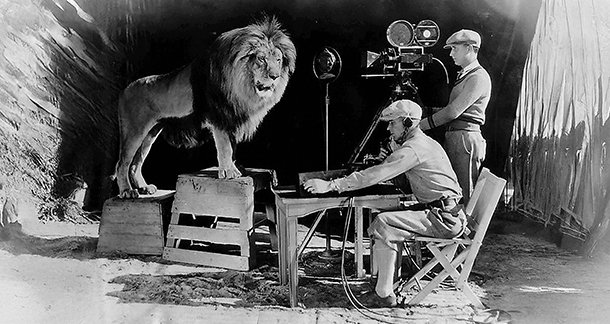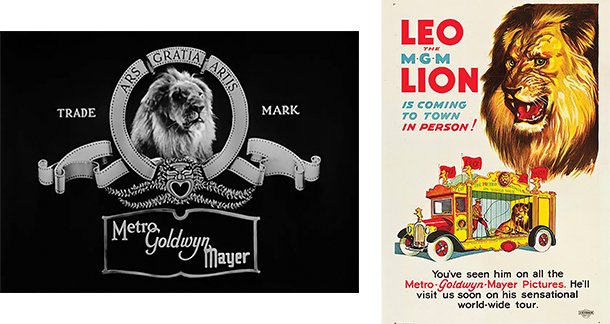As a child, every MGM film, Metro-Goldwyn-Mayer, opened with a lion roaring. It was their trademark. The lion appeared for a brief moment, and we would be thrilled by the sheer sight of it. The lion never roared, or we did not hear it during the silent era of film, but even then, it sure was impressive. Animals are very often used for entertainment, especially in the circus or in films.
Our close association with animals is very evident in most of the films we see, especially if the story revolves around them. In most cases, there are laws guiding how they are to be treated, and the entertainment companies follow the strict guidelines laid down by animal rights organizations. If animals are used in a film, there is a disclaimer shown on the screen that either graphical images were used or that they were not harmed.
My story is about the lion Leo, who was a part of a very prosperous and popular global film company. The lion Leo began his career with the film company in 1957. The logo idea of using the lion came from Howard Dietz, who was from Cambridge University. The logo of the university is that of a lion, and the university had a lion as its song was “Roar, Lion, Roar.”
There were several lions used over the years, up to the present day, and they are now all named Leo because the original lion was lucky to survive several disasters—one of them being a plane crash.

What touched me most was the story of the first lion, Slats, and his handler. He was trained by a man named Volney Phifer. They shared a very happy bond, and Phifer even taught the lion to roar on his cue. When Slats died at the age of 17, Phifer buried him on his farm in Gillette, New Jersey, and marked his grave. He later planted a pine tree over the grave so that the roots would “hold down the lion’s spirit.”
The name Leo, in general, stuck around for all the lions that followed, beginning with Jackie, who was used between 1928 and 1956. Jackie was the first lion whose roar audiences actually heard on screen. Born around 1915 in the Nubian Desert, Sudan, Jackie eventually ended up at the MGM studio, where he was trained by Mel Koontz. His roar was recorded on a gramophone record, and the lion became very famous and traveled widely. A very tame lion, Jackie was quite popular and even appeared alongside Greta Garbo, which made him even more well-known.
Jackie became the first MGM lion to be named “Leo the Lucky Lion.” This was because it is believed that he survived two train wrecks, a sinking ship, an earthquake in 1933, as well as an explosion at the studio. As if that wasn’t enough, he also survived a plane crash near Arizona. The glass-enclosed cage carrying Jackie proved too heavy for the aircraft. Surprisingly, both the pilot and the lion survived. The story goes that they lived for four days on sandwiches, milk, and water. By the time Jackie was found, he had grown thin and weak but was safely returned to the studio. From that point onward, his handlers took excellent care of him until his retirement at a zoo. The studio officially renamed him “Leo the Lucky Lion,” and the name Leo continued to be used for all the lions that followed.
This is a beautiful example of humans and animals coexisting in a working environment. It is important to care for them responsibly and stand by them in all circumstances. Lions, horses, elephants, leopards, snakes, and other wild creatures, when uprooted from their natural habitats, can still be treated with compassion and dignity.

